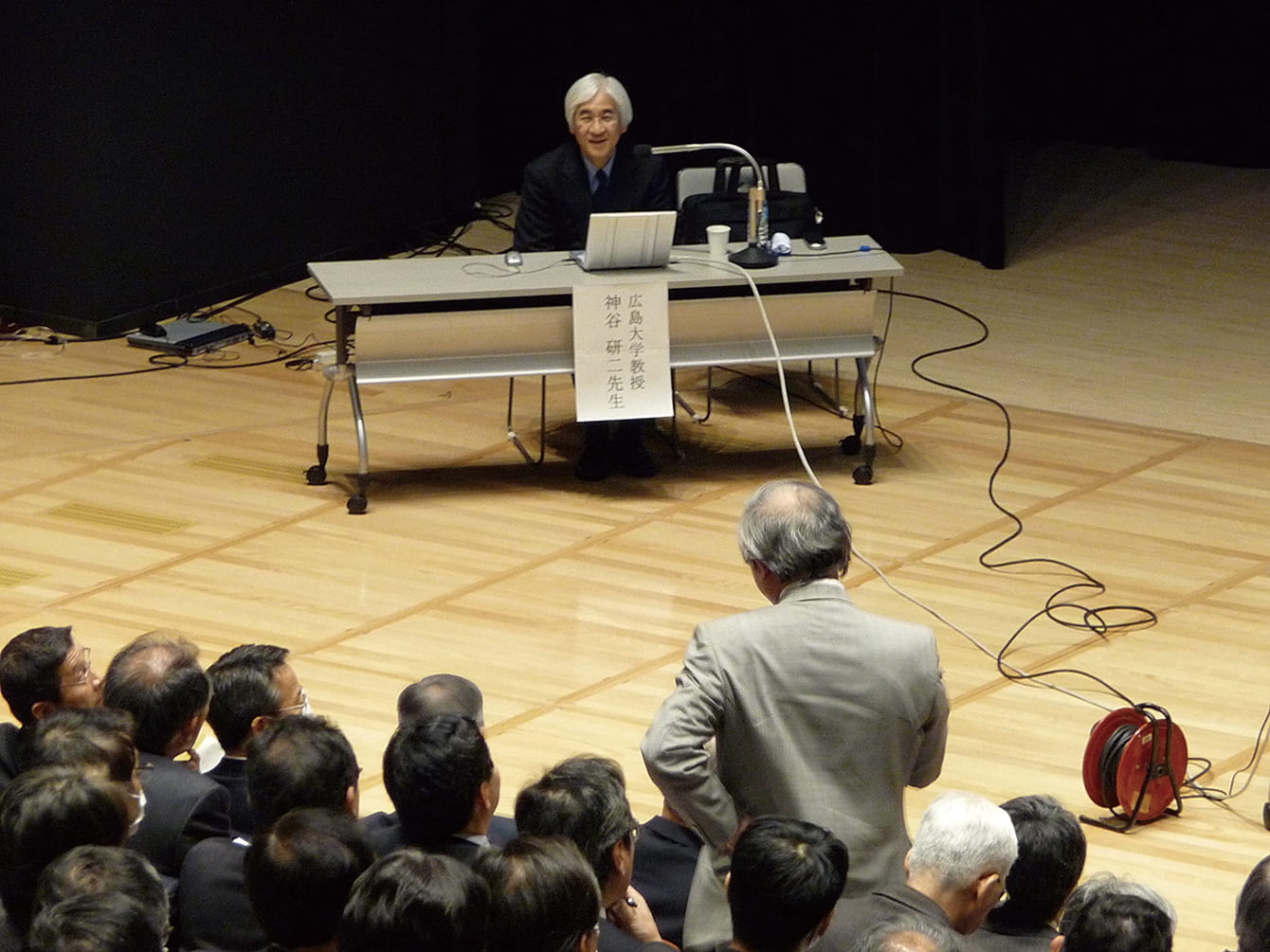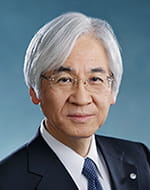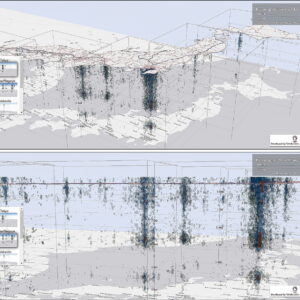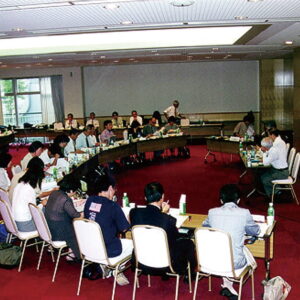Public acceptance of science is a big issue right now. It would be fair to say that the accident at Fukushima Daiichi Nuclear Power Plant was a major trigger for the debate. Scientists were completely at a loss as to what they should tell local citizens and how they should communicate it. Professor Kenji Kamiya, Vice President of both Hiroshima University and Fukushima Medical University, has spent the 10 years since the accident devoting his energies to risk communication as a radiation health risk management advisor. We asked him to reflect on the nature of the relationship between the public and science.
Special Feature 1 – Is Science Communication Good Enough? The Fukushima nuclear accident taught us that mutual trust is paramount
composition by Rie Iizuka
I believe that the accident at Tokyo Electric Power Company’s Fukushima Daiichi Nuclear Power Plant caused by the Great East Japan Earthquake has taught us a substantial lesson about approaches to science and technology communication with the public.
Before the accident, our job as scientists in the field of radiation biology and medicine was to conduct research and write academic papers, so we had few opportunities for direct engagement with the public, such as communicating messages to them. I believe the very concept that we need the general public to understand and support our research was lacking. For me personally, my experiences in Fukushima completely transformed my attitude in this regard.
The least appropriate attitude
Immediately after the accident, I was dispatched to Fukushima, where my work involved not only radiation medicine and radiation protection, but also risk communication and health management for local citizens. With adequate information lacking in the initial stages after the accident, some media reports speculated about health hazards of the same kind observed after the Chernobyl nuclear power plant accident, which substantially inflated public anxiety about radiation, I believe. Harmful rumors were also a serious problem, with children who had transferred from Fukushima to schools outside the prefecture subjected to bullying by other children, who taunted them about “transmitting radiation.” Appointed by Fukushima Prefecture as Radiation Health Risk Management Advisor, I worked on risk communication throughout the prefecture.
Radiation cannot be seen or smelled or otherwise detected by our five senses and the various information of dubious veracity available online made the task of risk communication difficult.
Once the national government and local governments began to report information on radiation dose monitoring and data on external exposure dose began to be reported from the Fukushima Health Management Survey, people began to understand that the level of exposure was nothing like the situation in Chernobyl. However, it is not easy to dispel local citizens’ disquiet with explanations using this information. The public had probably lost their trust in experts and the government. We were faced with a dilemma, as we could not get the correct information across, no matter how much we provided. Looking back now, I believe we lacked an awareness of the most obvious fact: that the first step in risk communication is seeking to understand the feelings of the people with whom you are trying to communicate. Paternalism is the kind of attitude exemplified by a teacher telling students “I’m going to teach you what’s right and you need to remember it.” This is the least appropriate attitude in the field of risk communication. However, initially we were not even aware of this fact, since the majority of radiation experts working in Fukushima were at that time complete amateurs when it came to risk communication.
This is probably why it was only to be expected that risk communication by scientists in Fukushima did not necessarily go very well at the outset.
Changing phases in communication
As time passed and we went through trial and error while holding repeated briefings in an effort to somehow communicate our information to local citizens, the form taken by our communication with the public changed. Initially, because local citizens did not have adequate knowledge of radiation, the loudest voices were those simply clamoring for basic information about radiation and its impact on health. Accordingly, explanations in the form of lectures for large audiences functioned effectively for a while after the accident (Figure 1). However, once the basic information was in circulation to some extent, we began to receive questions from individuals about their anxiety or issues concerning exposure relating to their specific living environments, and we came to feel that the general information about radiation risks provided in our lectures was not resonating with them. I believe that, while they could see the overall picture, they had a growing sense of unease about being unable to see how it related to their own particular situation. I felt that there had been a distinct change in the communication phase.

Figure 1. Giving an explanation in a lecture formatTrust cannot be created without steadily building up dialogue with local citizens, answering each of their questions and then answering the questions that those answers trigger.
After that, we began holding various talks for small groups, as much as possible. We repeatedly provided scientific facts about individual concerns, such as “My child ended up playing at such-and-such a park; will they be all right?” and “Will the effects of radiation be passed on to our next generation?” For each fact a person received, another question would spring up in its place and we would answer that one, too. Understanding does not develop without creating relationships of mutual trust by building up this kind of dialogue. That is the lesson of the Chernobyl nuclear power plant accident.
Another important activity was working with local citizens to check their environment, measuring the radiation dose in various places and assuring them that a particular figure meant that it was safe there. They would share with us the problems they perceived and together we would think about how to solve the problems that they faced. This is something that the ETHOS project did after the Chernobyl nuclear power plant accident. International Commission on Radiological Protection (ICRP) member Jacques Lochard is the scientist who implemented this project. Building on his experience, he advocates stakeholder involvement —— in other words, ensuring that stakeholders are involved in decision-making, without fail. Through the ICRP’s Fukushima Dialogue, I, too, learned that discussion involving stakeholders leads to building relationships of trust.
- *ETHOS project: A project by a French research team undertaken after the Chernobyl nuclear power plant accident, with the objective of supporting local citizens in radioactively contaminated areas of Belarus to take the initiative in working toward restoring all aspects of their lifestyles.
We must not forget that risk perception —— that is to say, understanding what people fear and what they consider to be a risk —— is a very subjective feeling. Risk perception differs according to an individual’s life experience, living environment, educational background, amount of knowledge, personality, view of society, and their mental state at the time. Even within individuals, it fluctuates. There is no right answer about what we are right to fear. Until I came to Fukushima, I was not even aware of the most fundamental aspect of risk communication —— that different people fear different things —— but I learned about the diversity of risk perception as I came into contact with local citizens on the ground.
The uncertainty of scientific evidence
Science has not yet fully shed light on the risk of developing cancer in low-dose radiation areas, making the task of risk communication regarding the health risks of radiation harder. Based on data for solid cancers among atomic bomb survivors from Hiroshima and Nagasaki, we know that the risk of developing cancer from radiation increases in a linear fashion in proportion to the exposure dose, and that there is no statistically significant difference in the risk of developing cancer if a single exposure dose is less than about 100 millisieverts (mSv) —— in other words, that no detectable effects from exposure to radiation are observed. However, this merely indicates that no significant difference can be detected in statistical terms and does not prove that there is no risk. The existence of uncertainty in scientific evidence is troubling to scientists, but the fact is that the risk of developing cancer from radiation below 100 mSv is not yet fully understood in scientific terms.
In order to protect people against radiation in light of this situation, the ICRP conducts risk forecasting using the linear non-threshold (LNT) hypothesis model, which envisages that the risk of developing cancer continues in a linear fashion into the low-dose region below the 100 mSv threshold from the region above it (Figure 2). The onset of radiation-induced cancer appears as a stochastic effect in respect of exposure dose, with lower exposure doses resulting in a lower probability of developing cancer. In terms of approaches to radiation protection, while the potential for developing cancer diminishes as the exposure dose declines, it is assumed never to reach zero, so the basic principle is to avoid exposure as far as possible and never to assume that any areas are safe in absolute terms.

Figure 2. The LNT hypothesis modelThe LNT hypothesis model states that there is no threshold in the relationship between radiation exposure dose and the risk of developing cancer, and that the risk of developing cancer increases in a linear fashion as the dose increases. On the other hand, epidemiological surveys generally show that no rise in the risk of developing cancer is seen at levels below 100 mSv.
However, what the general public was seeking in the initial stage after the Fukushima nuclear power plant accident was assurances that the risk was zero or that the dose in an area was absolutely safe. Judgments on risk in our daily lives are based on the binary of things being either safe or unsafe, so it is only natural that the people of Fukushima made such judgments about radiation exposure. However, as the risk of developing radiation-induced cancer is a stochastic effect, as described above, one cannot say that there is an absolutely safe dose (in other words, that there is a threshold value) with respect to the development of cancer.
Japanese people are not accustomed to understanding risk in probabilistic terms. It is hard to get a real sense of what a risk of 1 in 100,000 really means and I was lost for words when asked by local citizens, “But what if that one was a member of your own beloved family?” For the citizens of Fukushima, the accident was a catastrophe that came out of nowhere through no fault of their own, so I think they felt that even a 1 in 10,000 risk was unacceptable. The nuclear power plant accident looms large for them as the all-or-nothing question of whether or not their beloved family will develop cancer.
There is one finding from our research that demonstrates exactly how difficult it is to communicate scientific facts. In response to the question “Do you think there is a possibility of genetic effects due to the exposure situation in Fukushima?” in the Fukushima Health Management Survey, about 60% of respondents in FY2011 stated that the possibility was high or very high (Figure 3). While that figure gradually declined over the next three years, it has not changed very much since. Even in the most recent survey, about one-third of respondents expressed the belief that there was a possibility of genetic effects from radiation exposure in the Fukushima accident.

Figure 3. Changes in the proportion of radiation risk perception (effects in next generation) over the years (general population aged 16 and over)The problem of information published by the national and prefectural governments not fully reaching local citizens also shows up in opinion polls. Views on the genetic effects of radiation are just one example.
(Source: Fukushima Health Management Survey: Mental Health and Lifestyle Survey)
The external exposure dose over the four months following the Fukushima nuclear power plant accident was less than 5 mSv for 99.8% of local citizens. The third-party committee established by Fukushima Prefecture assessed the exposure situation as “not at a level at which a statistically significant difference in health impacts can be observed.” Incidentally, the annual exposure dose of a Japanese person is believed to be 5.97 mSv. Although the exposure dose of atomic bomb survivors was much higher than the exposure dose from the Fukushima nuclear power plant accident, no genetic effects have been found in the children of atomic bomb survivors. The people of Fukushima have a more abundant knowledge of radiation than people from other prefectures, as they have had more opportunities to learn about it than other regions. The fact that information about radiation has nonetheless not fully got through to them demonstrates once again the difficulty of risk communication.
You cannot communicate the facts without mutual trust
Over the last decade, a great deal of scientific evidence has been accumulated, including the Fukushima Health Management Survey and the results of studies conducted by such international organizations as the United Nations Scientific Committee on the Effects of Atomic Radiation (UNSCEAR). This has helped to restore a certain amount of calm among local citizens. In the online age, various information about radiation is circulated, but what will remain are facts based on scientific evidence. Scientific facts are unshakable, making them a powerful source of information. Our role as scientists is to communicate facts. If we communicate the facts properly and keep building them up, the scope of uncertainty will gradually diminish.
However, it is very difficult to communicate this information in a way that really hits home emotionally for people. When I first came to Fukushima soon after the accident, experts took the simplistic view that all they needed to do was to explain the scientific findings on the effects of radiation from the accident in an easily comprehensible way, without using technical terms. However, as I have described above, the reality was completely different.
It is often said that you cannot communicate the facts without relationships of mutual trust. Trust is at the very heart of it. Communication succeeds when people accept that you are on their side. We learned about dialogue from experiences in the wake of the Chernobyl nuclear power plant accident. However, the key to dialogue is small groups. To communicate facts that will convince most people, you need to engage in dialogue with small enough groups to give your message blanket coverage. There are limits to what individuals can do in terms of spreading the word in this way, so new partnerships with organizations such as mass media and schools are required.
When the children of Fukushima graduate from high school, about half of them move outside the prefecture. To nurture in these children the resilience required to withstand these heartless rumors, they need to learn how to arm themselves with scientific facts and ways of thinking. Education about radiation is essential to do so and is therefore a major task that must be addressed by education administration bodies and experts in radiation and the field of education.
Society has learned many lessons from the Fukushima nuclear power plant accident. Science communication with the public is one of these. Science is set to become increasingly specialized and will be applied in various parts of society. We must think about the kind of relationships we should build between science and the public when doing so.




















